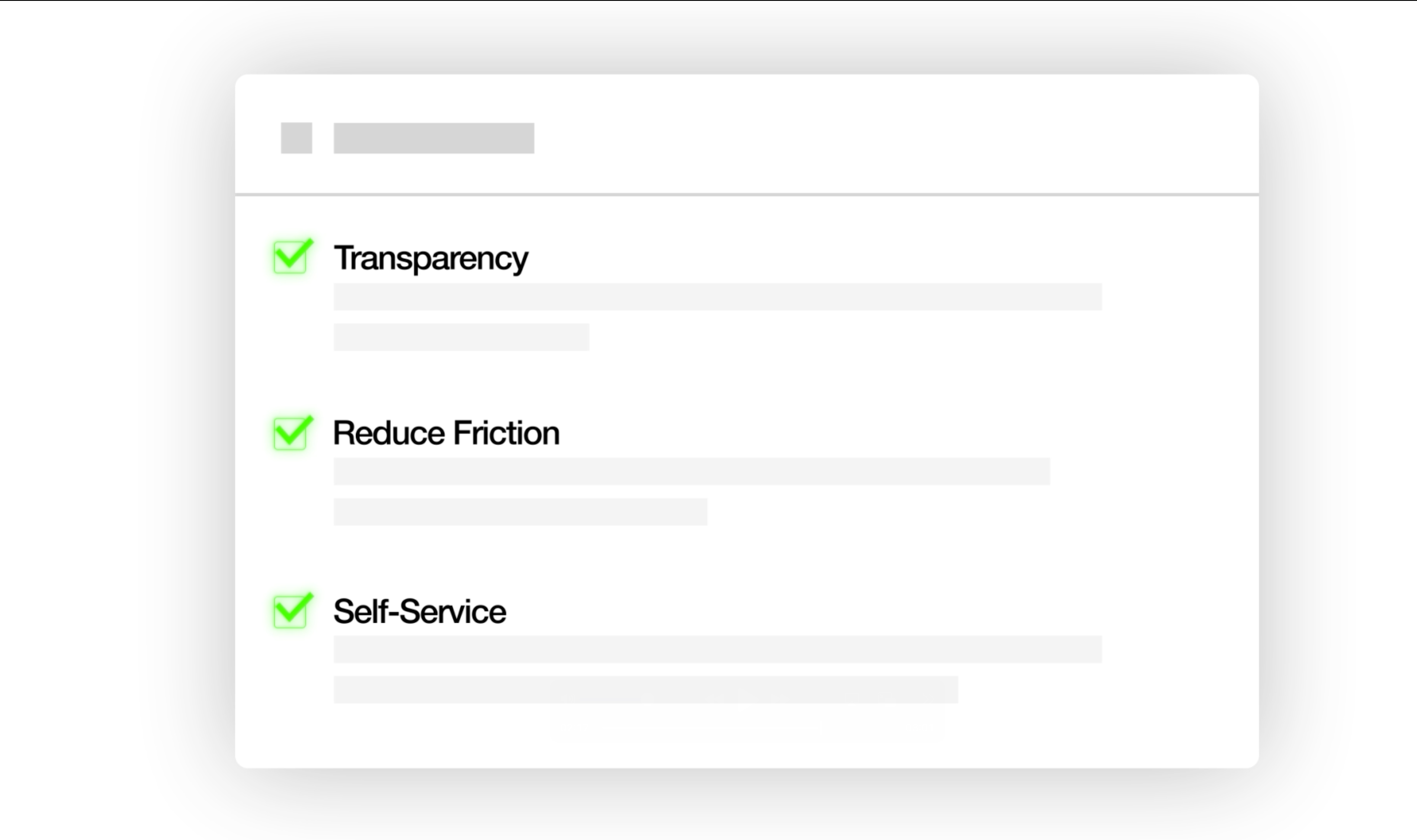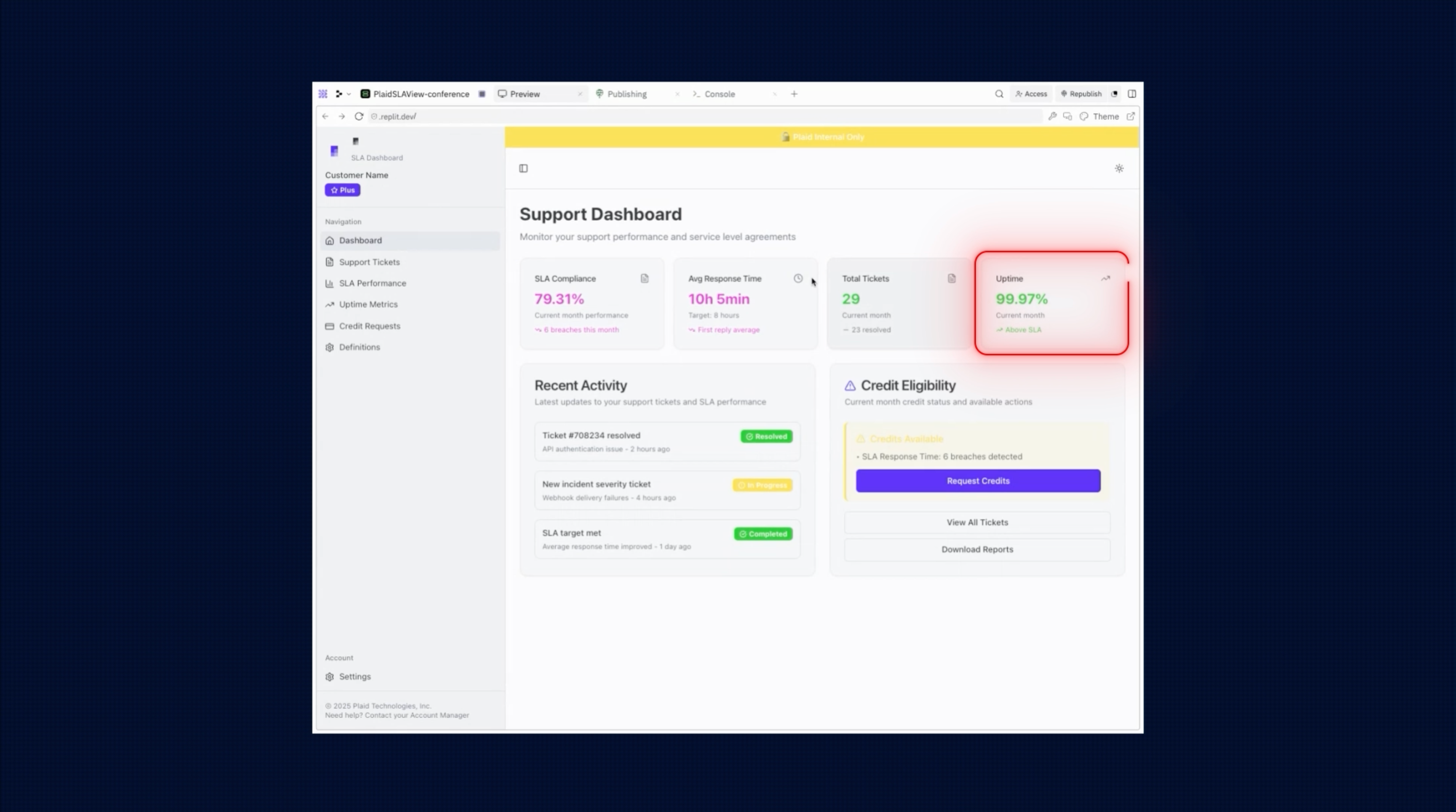How Plaid Built a Production SLA Dashboard with Replit Agent
96+
hours saved
10x
faster data access
2
hour build-a-thon
96+
hours saved
10x
faster data access
2
hour build-a-thon
"This is quite an exciting reimagining of what could be. Even though it's an internal dashboard, it's really helped me to create a visual representation of what our customers need. I really wouldn't have been able to do that without Replit."
Natalie Mercuri
Organizational Development Manager, Plaid
The Challenge
Plaid's platform support packages include contractual SLA commitments for support response times and product uptime.
Natalie Mercuri, who manages the sale, maintenance, and upkeep of these support packages, faced a highly manual monthly process. Each month, she would review uptime metrics via dashboard, generate reports for business operations and revenue teams, and work directly with account executives and account managers on SLA performance tracking.
The support dashboard where customers submit and monitor tickets didn't include much information about SLAs or Plaid uptime. Internal teams frequently came to Natalie with questions about how their customers' uptime was performing or requesting specific SLA metrics. The process was time-consuming and created unnecessary friction.

Why Replit
The opportunity came during Plaid's annual hackathon, which included a Replit demo and collaborative building session. Natalie saw this as the perfect chance to tackle the manual SLA tracking process.
As someone who has worked in support and understands the growing trend toward self-service, Natalie recognized that customers and internal peers need answers immediately. The decision to use Replit was driven by two clear goals: reduce the manual time spent building monthly reports and put more information in the hands of those who need it most.

Building with Replit
Built during the hackathon using Replit, Natalie created a reimagined version of the Plaid support dashboard. The application includes several key features:
High-Level Metrics Dashboard
The first page displays metrics that Natalie frequently receives questions about from both internal teams and customers:
- SLA compliance
- Average response time
- Total tickets submitted
- Product uptime
- Customer package information
Enhanced Support Ticketing View
The reimagined ticketing dashboard includes ticket number, subject, status, SLA status, package type, and assignee — far more than the current dashboard which only shows ticket number and subject. These additional fields are available through Plaid's existing Zendesk integration.
SLA Performance Tracking
Questions about SLA performance are common from internal teams, so having this information at their fingertips reduces back-and-forth time and helps customers feel empowered about their packages.
Package-Specific Uptime
While overall uptime is available on Plaid's status page, this dashboard shows uptime specific to each customer's actual package.
Easy-Reference Definitions
Instead of requiring users to dig through contracts using Command+F to find ticket status definitions or SLA times, the dashboard provides quick-reference information.
Value Realized: Operational Excellance
In early findings, Natalie estimated the dashboard could reduce time spent on the SLA tracking process by almost a full business day monthly. She also anticipates it will remove the need for Plaid intervention unless there are escalations, which will drive transparency, reduce friction, and enable the fully self-service model that many customers are requesting.
Currently serving as an internal dashboard, the tool has already helped Natalie create a visual representation of what customers need and demonstrate how impactful the dashboard could be if extended to customers. The success of building this during a hackathon proved that operational team members could create meaningful tools to solve real business problems — without traditional development resources or timelines.
About Plaid
Plaid is focused on democratizing financial services through technology. We build beautiful consumer experiences, developer-friendly infrastructure, and intelligent tools that give everyone the ability to create amazing products that solve big problems.
